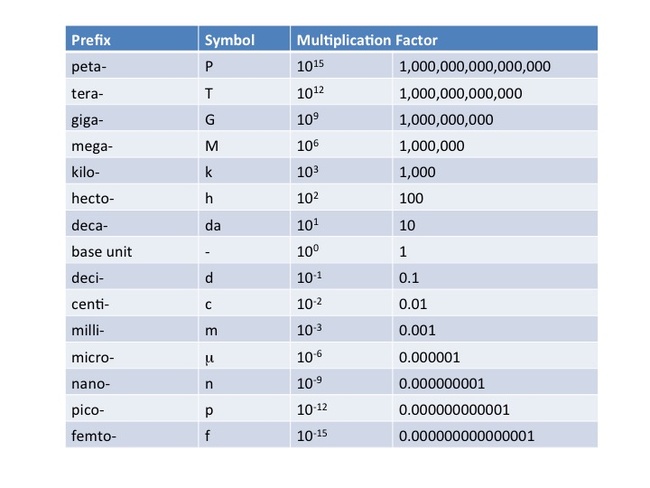Mini-Mods: General Chemistry - Units
Metric Conversions
Conversion between various metric units is common in science in order to report quantities more conveniently. For example, the S.I. unit for length is the meter (m), but if we were to report atomic radii in meters the number would be incredibly small. It is common however to report atomic radii in picometers (pm). So how do we convert between such quantities?
The first job is to learn the decimal prefixes and how they correspond to the base unit.

To interconvert between base unit and a particular prefix we need to find a conversion factor (see Mini-Mod Unit Conversion).
Metric Conversion Factors (easy)
How many centimeters are there in 2.5 meters?
We start with the quantity and apply the conversion factor. We can find the conversion from the table above. The tricky part is determining how many units of one kind are in another. All of the prefixes in the table that are below the base unit (deci, centi, milli etc) are smaller than the base unit by a factor equal to the multiplication factor. In this case, centi has a multiplication factor of 0.01, so
The multiplication factor always goes in front of the base unit.
How many meters are there in 0.530 km?
The multiplication factor for kilometers is 1000.
Again, the multiplication factor goes in front of the base unit.
Practice Question 1
How many millimeters are there in 0.236 meters?
Metric Conversion Factors (hard)
It’s harder to convert between metric units when the base unit is not part of the conversion. But as long as we know the multiplication factors, then it becomes much simpler. We can add in the base unit as part of the conversion and just handle the process as above.
How many decimeters are there in 1.32 kilometers?
To tackle this problem we first want to convert km to m and then from m to dm. The multiplication factor for decimeters is 0.1 and for kilometers is 1000.
Practice Question 2
How many micrometers are there in 0.429 cm?
Practice Question Answers
1) 236 millimeters
2) 4290 micrometers